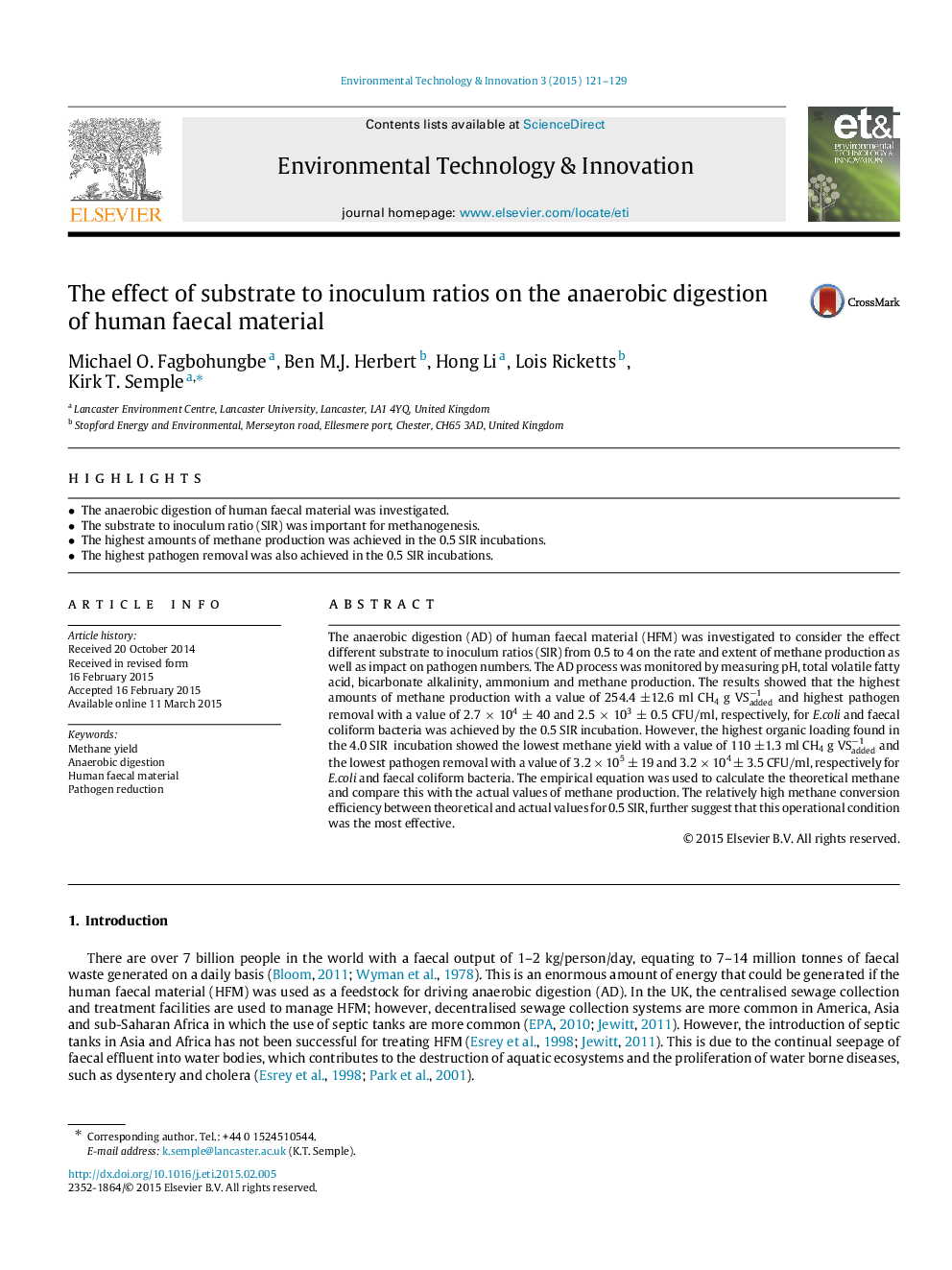| کد مقاله | کد نشریه | سال انتشار | مقاله انگلیسی | نسخه تمام متن |
|---|---|---|---|---|
| 4428182 | 1619285 | 2015 | 9 صفحه PDF | دانلود رایگان |
• The anaerobic digestion of human faecal material was investigated.
• The substrate to inoculum ratio (SIR) was important for methanogenesis.
• The highest amounts of methane production was achieved in the 0.5 SIR incubations.
• The highest pathogen removal was also achieved in the 0.5 SIR incubations.
The anaerobic digestion (AD) of human faecal material (HFM) was investigated to consider the effect different substrate to inoculum ratios (SIR) from 0.5 to 4 on the rate and extent of methane production as well as impact on pathogen numbers. The AD process was monitored by measuring pH, total volatile fatty acid, bicarbonate alkalinity, ammonium and methane production. The results showed that the highest amounts of methane production with a value of 254.4 ±12.6 ml CH4gVSadded−1 and highest pathogen removal with a value of 2.7×104±40 and 2.5×103±0.5 CFU/ml, respectively, for E.coli and faecal coliform bacteria was achieved by the 0.5 SIR incubation. However, the highest organic loading found in the 4.0 SIR incubation showed the lowest methane yield with a value of 110 ±1.3 ml CH4gVSadded−1 and the lowest pathogen removal with a value of 3.2×105±19 and 3.2×104±3.5 CFU/ml, respectively for E.coli and faecal coliform bacteria. The empirical equation was used to calculate the theoretical methane and compare this with the actual values of methane production. The relatively high methane conversion efficiency between theoretical and actual values for 0.5 SIR, further suggest that this operational condition was the most effective.
Journal: Environmental Technology & Innovation - Volume 3, April 2015, Pages 121–129
